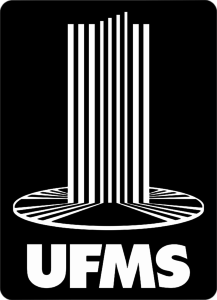Use este identificador para citar ou linkar para este item:
https://repositorio.ufms.br/handle/123456789/1902Registro completo de metadados
| Campo DC | Valor | Idioma |
|---|---|---|
| dc.creator | Padovan, Cacilda Tezelli Junqueira | - |
| dc.creator | Bonin, Camila Mareti | - |
| dc.creator | Tozetti, Inês Aparecida | - |
| dc.creator | Ferreira, Alda Maria Teixeira | - |
| dc.creator | Fernandes, Carlos Eurico dos Santos | - |
| dc.creator | Costa, Izaias Pereira da | - |
| dc.date.accessioned | 2014-02-15T00:47:16Z | - |
| dc.date.available | 2021-09-30T19:57:06Z | - |
| dc.date.issued | 2013 | - |
| dc.identifier.citation | PADOVANI, Cacilda Tezelli Junqueira et al . Glucocorticoid-induced tumor necrosis factor receptor expression in patients with cervical human papillomavirus infection. Rev. Soc. Bras. Med. Trop., Uberaba, v. 46, n. 3, jun. 2013 . Disponível em <http://www.scielo.br/scielo.php?script=sci_arttext&pid=S0037-86822013000300288&lng=pt&nrm=iso>. acessos em 31 jul. 2013. http://dx.doi.org/10.1590/0037-8682-0029-2013. | pt_BR |
| dc.identifier.issn | http://dx.doi.org/10.1590/0037-8682-0029-2013. | - |
| dc.identifier.uri | https://repositorio.ufms.br/handle/123456789/1902 | - |
| dc.description.abstract | ABSTRACT - Introduction The progression of human papillomavirus (HPV) infection in the anogenital tract has been associated with the involvement of cells with regulatory properties. Evidence has shown that glucocorticoid-induced tumor necrosis factor receptor (GITR) is an important surface molecule for the characterization of these cells and proposes that GITR ligand may constitute a rational treatment for many cancer types. We aimed to detect the presence of GITR and CD25 in cervical stroma cells with and without pathological changes or HPV infection to better understand the immune response in the infected tissue microenvironment. Methods We subjected 49 paraffin-embedded cervical tissue samples to HPV DNA detection and histopathological analysis, and subsequently immunohistochemistry to detect GITR and CD25 in lymphocytes. Results We observed that 76.9% of all samples with high GITR expression were HPV-positive regardless of histopathological findings. High GITR expression (77.8%) was predominant in samples with ≥1,000 RLU/PCB. Of the HPV-positive samples negative for intraepithelial lesion and malignancy, 62.5% had high GITR expression. High GITR expression was observed in both carcinoma and high-grade squamous intraepithelial lesion (HSIL) samples (p = 0.16). CD25 was present in great quantities in all samples. Conclusions The predominance of high GITR expression in samples with high viral load that were classified as HSIL and carcinoma suggests that GITR+ cells can exhibit regulatory properties and may contribute to the progression of HPV-induced cervical neoplasia, emphasizing the importance of GITR as a potential target for immune therapy of cervical cancer and as a disease evolution biomarker. | pt_BR |
| dc.language.iso | eng | pt_BR |
| dc.publisher | Revista da Sociedade Brasileira de Medicina Tropical | pt_BR |
| dc.rights | Acesso Aberto | pt_BR |
| dc.subject | Papillomavirus Humano 16 | pt_BR |
| dc.subject | Papillomavirus Humano 18 | pt_BR |
| dc.subject | Papillomavirus Humano 31 | pt_BR |
| dc.subject | Imunoistoquímica | pt_BR |
| dc.subject | Imunidade | pt_BR |
| dc.subject | Human papillomavirus 16 | pt_BR |
| dc.subject | Human papillomavirus 18 | pt_BR |
| dc.subject | Human papillomavirus 31 | pt_BR |
| dc.subject | Immunohistochemistry | pt_BR |
| dc.subject | Immunity | pt_BR |
| dc.title | Glucocorticoid-induced tumor necrosis factor receptor expression in patients with cervical human papillomavirus infection | pt_BR |
| dc.type | Artigo de Periódico | pt_BR |
| Aparece nas coleções: | CCBS - Artigos publicados em periódicos | |
Arquivos associados a este item:
| Arquivo | Descrição | Tamanho | Formato | |
|---|---|---|---|---|
| Glucocorticoid-induced tumor.pdf | 2,63 MB | Adobe PDF |  Visualizar/Abrir |
Os itens no repositório estão protegidos por copyright, com todos os direitos reservados, salvo quando é indicado o contrário.

